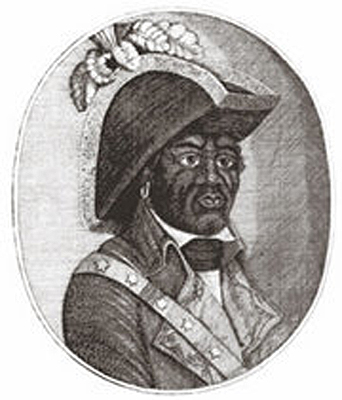
Fort Mose (3) |
 |
|---|
Image: This is the most frequently shown image of Jorge (or, Georges) Biassou. (Sometimes it is mistakenly identified as an image of Tousssaint Louverture.) Comment: From 1791 to 1796 Biassou was a general in the service of the Spanish monarchy during the Haitian War of Independence (i.e., Haitian Revolution) from France including the emancipation of the slaves in Saint Domingue (Hispaniola). In Saint Domingue, Biassou commanded the Black Auxiliaries of king Carlos IV of Spain. When Toussaint Louverture switched sides (from Spain to Revolutionary France), Biassou remained loyal to Spain. He, with his general's rank, and with his black Haitian militiamen, moved to San Agustín (St. Augustine), where he again commanded the black militia of Fort Mose and at Fort Matanzas (south of St. Augustine and now run by the National Park Service). He bought a large plantation north of San Agustín. He was the second highest-paid official in the Spanish colony of La Florida. He rented a house in downtown San Agustín on the Calle Real (now King Street); most likely it was the Salcedo House (for a 2007 photograph of this house, click here =>). He died in 1801. Nominally a Roman Catholic, Biassou also practiced Vodun (vodoun). His funeral was held at the Catholic church (now the Basilica Cathedral) and he was buried at the (Catholic) Tolomato Cemetery (where a half century later the Cuban priest and patriot Félix Varela was first buried) on Cordova Street. According to the brilliant scholar Jane Landers, the (white Spanish) Governor Enrique White gave Biassou a funeral with full military honors: "The obligations of [Spanish] military corporatism outweighed any racial distinctions in this ceremony" (133). For a newspaper article on Biassou, see: => St. Augustine Record. Humanities question: What notable aspects do you see in this image? |
|---|
 |